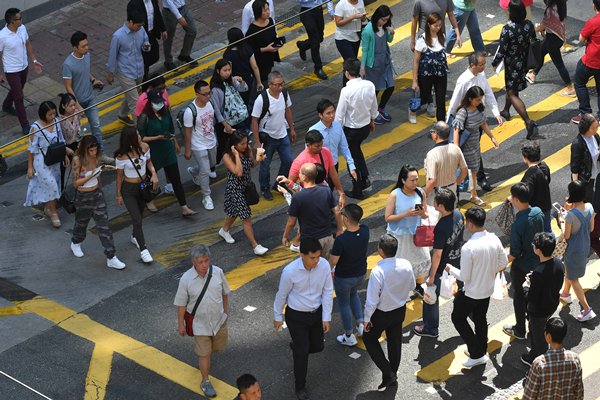Unemployment Rises To 4.2%

The seasonally adjusted unemployment rate increased to 4.2% in the period between January and March, up from 3.7% for the period between December 2019 and February, the Census & Statistics Department announced today.
The underemployment rate also increased to 2.1% in the period.
Total employment dropped by 48,800 to 3,720,000 while the labour force fell by 20,800 to 3,882,200.
There were 134,100 unemployed people in the period, an increase of 28,100 from the period between December 2019 and February, and the number of underemployed people rose by 23,700 to 82,800.
Secretary for Labour & Welfare Dr Law Chi-kwong said that the labour market further deteriorated as the COVID-19 pandemic severely disrupted a wide range of economic activities.
The unemployment rate soared by 0.5 percentage point to 4.2% for the period, the highest in more than nine years, while the underemployment rate likewise surged 0.6 percentage point to 2.1%, the highest in nearly a decade, he said.
The year-on-year declines in total employment and labour force widened further to 3.6% and 2.2%, both the largest on record.
The combined unemployment rate of the consumption and tourism-related sectors of retail, accommodation and food services soared to 6.8%, the highest since the period between August and October in 2009 following the global financial crisis, while the underemployment rate rose to 3.9%, the highest since the period between June and August of 2003 following the onslaught of SARS.
Dr Law added the situation in food and beverage service activities was severe, with the unemployment and underemployment rates surging to 8.6% and 5.4%.
Meanwhile, the unemployment and underemployment rates of the construction sector went up drastically to 8.5% and 7.1% amid a visible slowdown in construction activities.
The unemployment and underemployment situation worsened visibly in the transportation and education sectors as well. Labour market conditions in most other sectors also saw deterioration of various degrees.
Dr Law said: "The labour market will continue to face significant pressure from the economic fallout arising from the pandemic in the near term.
“The Government has rolled out relief measures of unprecedented scale, including the one-off measures in the 2020-21 Budget and the two rounds of measures under the Anti-epidemic Fund totalling $287.5 billion, with a view to preserving the vitality of the economy and relieving people's financial burdens.
“Some specific measures, in particular the Employment Support Scheme and various types of support for specific sectors, should help keep workers in employment.
“The Government will closely monitor the developments, including the progress and effectiveness of the various relief measures.”
US Stocks Rise On Hopes Of Pause In Rate Increases
Wall Street stocks finished solidly higher on Thursday, reflecting better sentiment on the US economy and a consensus vi... Read more
China's Financial Risks 'controllable': Regulators
The head of the National Financial Regulatory Administration on Thursday told a high-profile forum in Shanghai that the ... Read more
Banks Cut Yuan Deposit Rates, Could Boost Consumption
China's biggest banks on Thursday said they have lowered interest rates on yuan deposits, in actions that could ease pre... Read more
Cheese And Wine Put EU, Australia Deal In Peril
Australia on Thursday threatened to walk away from a blockbuster free trade deal with the European Union unless its prod... Read more
US Stocks End Mixed As Tech Shares Are Sold Off
Gains by industrial companies lifted the Dow on Wednesday, while weakness among technology shares pushed the Nasdaq deci... Read more
Amazon 'plans Prime Video Streaming Service With Ads'
Amazon.com is planning to launch an advertising-supported tier of its Prime Video streaming service, the Wall Street Jou... Read more


